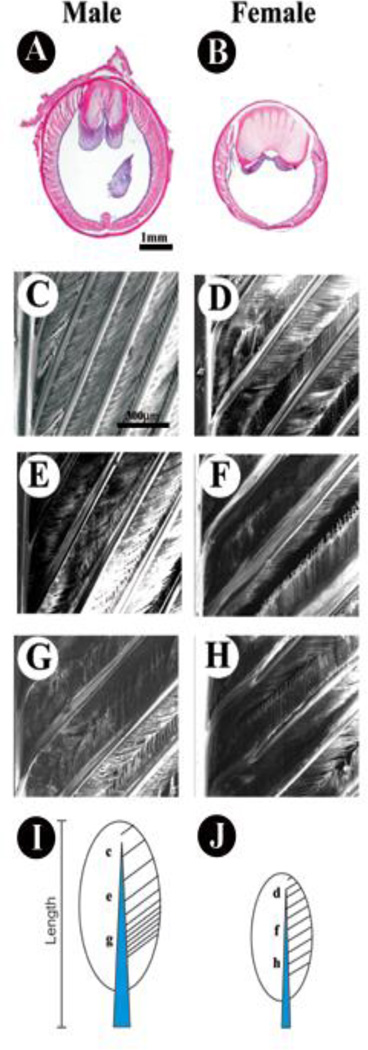Fig. 7.
Morphological difference in male and female tail feathers. H&E staining of male (A) and female (B) feathers at the same height up from the base reveals differences in diameter, rachis width, and barb density. The barb density is distributed as a gradient in male rectrices but is constant in female feathers as seen in scanning EM photographs. In males the density is lowest near the distal tip (compare C, D), moderate in the middle (compare E, F) and highest at the base (compare G, H) as shown in scanning EM photographs. Overall, the rachis is wider at the proximal base of tail feathers, but tapers toward the distal end; however, the width of the male is larger than the width of the female feathers at equivalent locations. These differences are shown schematically for male (I) and female (J) tail feathers.

